TORTRICIDAE - Grapholita
Taxonomy
Tortricoidea: Tortricidae: Olethreutinae: Grapholitini: Grapholita
Synonyms: Aspila, Endopisa, Grapholitha, several others
Larval diagnosis (Summary)
- D1 and SD1 on the same pinaculum on A9
- L group on T1 not extending beneath the spiracle
- Anal comb present
- Crochets numerous (>25), uniordinal or biordinal
- SV group variable, usually 3:3:2:2:2 or 3:3:2:2:1
- On Rosaceae or Ericaceae
Host/origin information
Grapholita larvae are most commonly intercepted on Cydonia and Prunus from Europe and Mexico. The most frequent origin/host combinations are listed here:
| Origin |
Host(s) |
| Albania | Cydonia oblonga |
| Mexico | Cydonia oblonga, Prunus persica |
| Romania | Cydonia oblonga |
Recorded distribution
Grapholita is a cosmopolitan genus. Its members are found on every continent except Antarctica.
Identification authority (Summary)
Most Grapholita are found on Rosaceae or Ericaceae
and have a combination of the following characters: D1 and SD1 on the same pinaculum on A9; L group on T1 not extending beneath the
spiracle; anal comb present; crochets numerous (>25), uniordinal or biordinal; SV group variable, usually 3:3:2:2:2 or 3:3:2:2:1.
It is difficult or impossible to reliably identify species of Grapholita using only morphology. In many cases molecular diagnostics are necessary to confirm
species-level identifications.
Pest characterization
(Based on Cavey 2001, Brown 2011)
- Taxonomy: High. Identification to genus is usually possible.
- Distribution: High/Low. Some Grapholita are present in the U.S.; however, some important pest species are not.
- Potential Impact: High. Many Grapholita are important pests.
This ranking characterizes Grapholita as quarantine significant for the U.S. in some instances and not quarantine significant in other instances.
The actual ranking for an intercept will depend on the species involved.
TORTRICIDAE - Grapholita
Larval diagnosis (Detailed)
The worldwide genus Grapholita contains approximately 125 described species. This genus contains many well known tortricid pests, such as the
oriental fruit moth (G. molesta), cherry fruit worm (G. packardi), lesser apple worm (G. prunivora), and plum fruit moth (G. funebrana).
Larvae are internal feeders in fruit and can cause significant economic damage to stone and pome fruit (almonds, apricots, cherries, nectarines,
peaches, pears, plums, etc.). The white to reddish larvae resemble those of other internal-feeding olethreutines, such as Cydia.
Brown (2011) divided intercepted tortricid larvae into four "types." Grapholita are grouped under the "Olethreutinae type" with D1 and SD1 on the
same pinaculum on A9, the L group on T1 not extending beneath the spiracle, and an anal comb present. He used the following characters to identify larvae of
Grapholita: crochets numerous (>25), uniordinal or biordinal; SV group variable, usually 3:3:2:2:2 or 3:3:2:2:1; on Rosaceae and Ericaceae.
MacKay (1959) grouped most Nearctic Grapholita pest species in "Laspeyresia Group 3," a group that also contained several Cydia. Her diagnosis for the group
included the following: head with ocellar area always rounded; adfrontals never strongly tapered anteriorly, often being of about the same width throughout;
ocelli [stemmata] all of approximately the same size and not spaced far apart; spinneret rounded at distal end (broken in our illustrated specimen,
see Cepeda et al. 2011: Fig. 11 for an intact example) but varying in length; SD1 on segment 8 always
anterior or anteroventral to the spiracle; spiracle on segment 8, in some species, tending to be slightly posterior to a mid-dorsovental line; L1 and L2 on segments
1-7 occasionally slightly posterior to a vertical line through spiracle but never anterior to it; SV group on segment 9 almost invariably a single
seta; the anal shield rounded or often somewhat truncated posteriorly, and L1s and SD1s of the anal setae about as long as the anal segment; crochets
uniordinal, often unevenly so; pinacula of V1s on thorax fused to coxae or almost so; anal fork absent, or small if present.
Note that MacKay described the anal comb (= fork) as both present and absent in this group. An anal comb is absent in most Cydia and present in Grapholita, although
there are a few Grapholita, such as G. interstinctana, in which it is absent. Fortunately, all of the major pest species of Grapholita have a small
anal comb, and this character can be used to separate them from common Cydia, such as C. pomonella.
Unfortunately, MacKay's descriptions are little help in separating larvae of Grapholita from other genera or from each other. This is partially due to the
variability of many of the characters within the genus; as an example, here is her description of the SV counts in G. molesta: "SV group on segments 1,2,7,8, and 9
usually 2:3,2:2:2:2 but unstable and occasionally 2:3,2:2:2:1 or 3,2:3:2:2:1 and even 2:3,2:2:2:2 on one specimen." She attempted to separate the economically
important species of Grapholita using head size, spinneret size, and coloring. However, larval pattern and pigmentation can vary in the Grapholita genus group (Komai 1999: 27).
Brown (1987) also attempted to separate G. molesta, G. prunivora, and G. packardi using head capsule size and body color in preserved specimens.
He used the following characters for the genus Grapholita: SV group on A9 usually unisetose; SD2 on T2 usually anterodorsal to SD1; anal comb present SV group on A2;
and L group on A9 trisetose. Komai (1999: 105) added that the Grapholita subgenus Aspilia (that includes G. molesta) has SD1 and SD2 on the same pinaculum on A1-7; a feature
they share with the tortricine tribe Archipini. Cepeda et al. (2011) described, and later made a key (Cepeda and Cubillos 2012), to the Tortricidae of economic importance
attacking fruit trees in Chile. They separated C. pomonella and G. molesta from other Olethreutinae by having the MSD1 and MSD2 pinacula fused on the mesothorax and by having
uniordinal crochets on A3-6.
While some of the characters listed by MacKay (1959) and Brown (1987) may be useful in diagnosing Grapholita larvae to species in parts of North America, they are likely only reliable in
late-instar individuals. When tested against other pest species, like G. funebrana (e.g. Baker 1963, reproduced in Whittle 1984), the characters are subtle and may not be practical for
identifiers without a large larval collection for comparison. We do not recommend attempting to identify Grapholita larvae below the genus level with morphology unless there is a compelling
need to do so. Molecular diagnostics are usually required to obtain a reliable species-level identification for interceptions that are quarantine significant. Several diagnostic
methods are available: Chen and Dorn (2009) developed a PCR-RFLP assay to separate G. funebrana from G. molesta and several other species; and Barcenas et al. (2005) used a type of
DNA barcoding to separate early instars of C. pomonella, G. molesta, G. prunivora, and G. packardi.
Identification authority (Detailed)
Host can be useful in identifying larvae of Grapholita, although origin is usually not. Most Grapholita are found on Rosaceae or Ericaceae
and have a combination of the following characters (Brown 2011): D1 and SD1 on the same pinaculum on A9; L group on T1 not extending beneath the
spiracle; anal comb present; crochets numerous (>25), uniordinal or biordinal; SV group variable, usually 3:3:2:2:2 or 3:3:2:2:1.
It is difficult or impossible to reliably identify species of Grapholita using only morphology. In many cases molecular diagnostics are necessary to confirm
species-level identifications.
The presence of an anal comb separates most Grapholita larvae from Cydia. The anal comb may be difficult to see in very small larvae without careful
examination. Identifiers should be especially careful with small Cydia-type larvae where the anal comb appears to be absent, but there is a large number
of crochets on the abdominal prolegs (25 or more).
TORTRICIDAE - Grapholita
Origin records
Grapholita have been intercepted from the following locations:
Albania, Argentina, Armenia, Australia, Austria, Azerbaijan, Bosnia and Herzegovina, Brazil,
Bulgaria, Canada, China, Croatia, Czech Republic, Denmark, Dominican Republic, Ecuador, El Salvador,
Estonia, France, Germany, Greece, Guatemala, Hungary, India, Iran, Iraq, Ireland, Italy, Japan,
Jordan, Kenya, Lebanon, Lithuania, Luxembourg, Macedonia, Mexico, Moldova, Montenegro, Morocco, Netherlands,
Nigeria, Poland, Romania, Russia, Saudi Arabia, Serbia, Serbia and Montenegro, Slovenia, South Korea, Spain, Switzerland,
Togo, Turkey, Ukraine, United Kingdom of Great Britain and N. Ireland, Yugoslavia
Host records
Grapholita have been intercepted on the following hosts:
Amaranthaceae, Capsicum frutescens, Casimiroa edulis, Crataegus sp., Crotalaria sp., Cycas revoluta,
Cydonia oblonga, Cydonia sp., Dialium guianense, Dianthus sp., Diospyros kaki, Diospyros sp., Ficus sp.,
Helianthus annuus, Limonium sp., Malus domestica, Malus sp., Malus sylvestris, Melicoccus sp.,
Mespilus germanica, Ocimum basilicum, Persea americana, Pithecellobium dulce, Prunus armeniaca, Prunus domestica,
Prunus dulcis, Prunus persica, Prunus sp., Psidium guajava, Punica granatum, Pyrus bretschneideri, Pyrus communis,
Pyrus pyrifolia, Pyrus sp., Rosa sp., Rosaceae, Solanum melongena, Vaccinium sp., Zea mays
TORTRICIDAE - Grapholita
Setal map
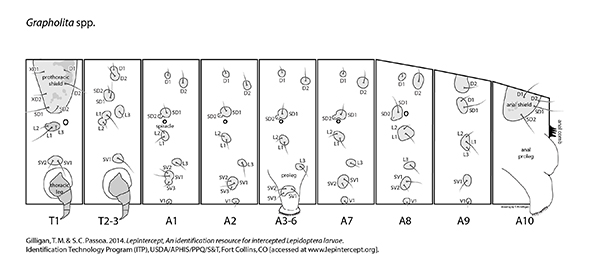 Grapholita molesta setal map Grapholita molesta setal map
<< Previous fact sheet Next fact sheet >>
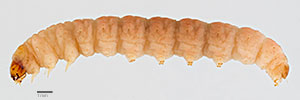 Fig. 1: Grapholita molesta, lateral view
Fig. 1: Grapholita molesta, lateral view |
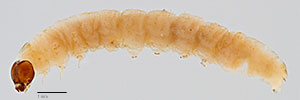 Fig. 2: Grapholita funebrana, lateral view
Fig. 2: Grapholita funebrana, lateral view |
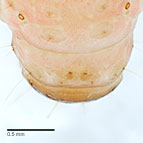 Fig. 3: Grapholita molesta, A9 dorsal view
Fig. 3: A9 dorsal |
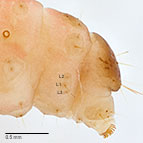 Fig. 4: Grapholita molesta, A9 lateral view
Fig. 4: A9 lateral |
 Fig. 5: Grapholita molesta, anal comb
Fig. 5: Anal comb |
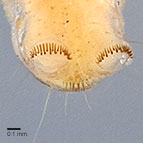 Fig. 6: Grapholita funebrana, anal comb
Fig. 6: Anal comb |
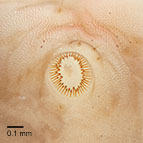 Fig. 7: Grapholita molesta, crochets
Fig. 7: Crochets |
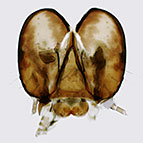 Fig. 8: Grapholita molesta, head
Fig. 8: Head |
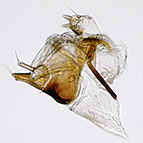 Fig. 9: Grapholita molesta, hypopharyngeal complex
Fig. 11: Hypo. complex |
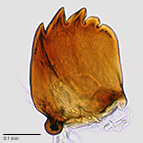 Fig. 10: Grapholita molesta, mandible
Fig. 10: Mandible |
|
|
|
|
|